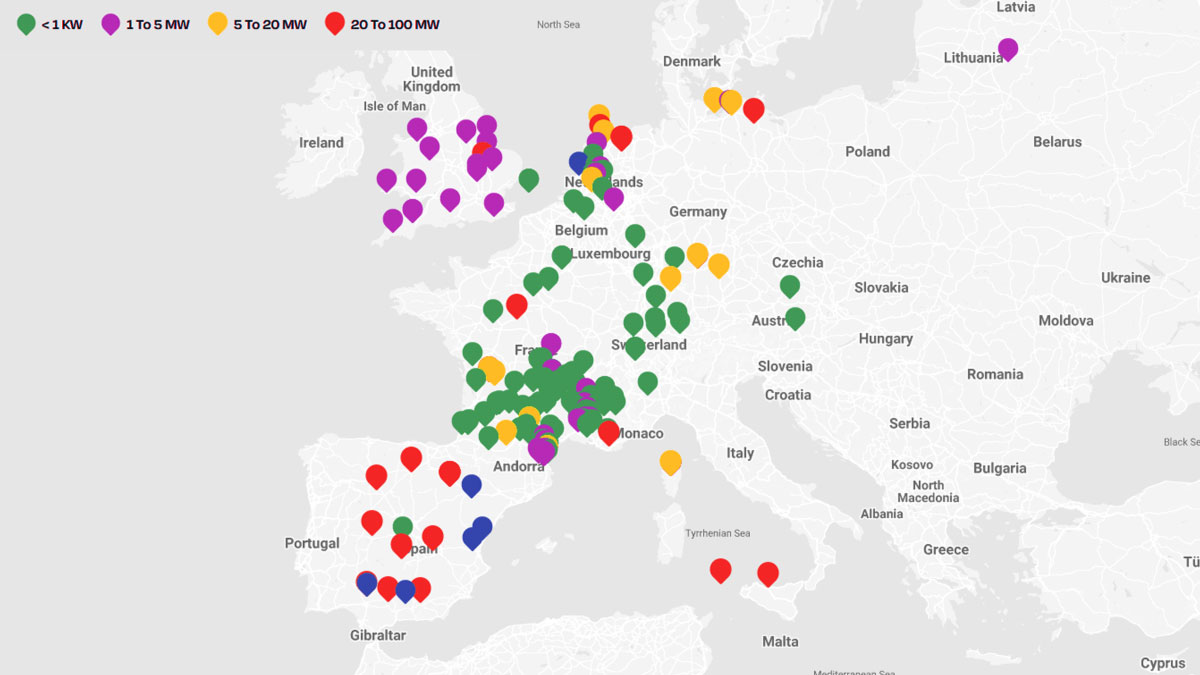SolarPower Europe’s New Agrisolar Digital Map
Over 200 Projects Across Europe
SolarPower Europe has launched the first-of-its-kind digital map showcasing agrisolar projects across Europe. The innovative platform presents over 200 agrisolar projects spanning 10 European countries. With a combined capacity exceeding 2.8 GW, these agrisolar projects represent a significant milestone in the integration of solar energy with agricultural practices.
Agrisolar, referring to the integration of solar photovoltaic projects within an agricultural activity, includes the deployment of PV on the roof of agricultural buildings, PV integrated into irrigation systems, and agrivoltaics.
The map highlights a diverse range of technologies, including ground-mounted PV, interrow PV, dynamic PV, overhead PV, farm rooftop PV, and solar PV greenhouses, tailored to accommodate various agricultural activities.
“With this digital map providing an overview of Agri-PV installations across Europe, we aim to illustrate the current development of this market and enable tracking of its progress. It’s evident that various types of installations have been built in accordance with SolarPower Europe guidelines, fostering a wide array of solutions to address the diverse needs of the agricultural sector,” Eva Vandest, Group Head of Public Affairs, Global Agrisolar expert at Amarenco and Chair of SolarPower Europe’s Land Use and Permitting Workstream, stated.
“This map unveils how agrisolar and farming can go hand in hand to support a multitude of crops such as vines, fruit plants, market gardening, wheat, barley, and more. Agrisolar can also integrate with livestock farming practices, including sheep grazing, cows, hens, and beekeeping,” Lina Dubina, Policy Advisor on Sustainability at SolarPower Europe, added. “Many agrisolar projects featured on the map incorporate biodiversity initiatives aimed at preserving and enhancing ecosystems. These initiatives include tracking wildflowers as well as various animal species, further underscoring the environmental benefits of agrisolar integration,” she also noted.
The map provides a comprehensive overview of projects across Switzerland, France (including outer regions), Netherlands, Lithuania, Germany, Spain, Italy, Belgium, Austria, and the UK, serving as a valuable resource for stakeholders interested in the intersection of solar energy and agriculture. The project will be ongoing, with the aim of providing the most comprehensive overview of agrisolar projects in Europe to solar developers, farmers, researchers, and policymakers.
The agriculture sector is facing a multitude of challenges, from the climate crisis to volatile energy prices. Extreme weather such as heat waves and drought are affecting crop yield and animal well-being, while increased costs are affecting the livelihoods of farmers.
Agrisolar offers the perfect solution. Solar installations coupled with agriculture practices can provide many benefits for the planet and both sectors.
These benefits include improving crop yield; providing shade for farm animals; protecting and restoring local biodiversity and ecosystems; reducing water usage on farms; and offering extra revenue streams for farmers.



